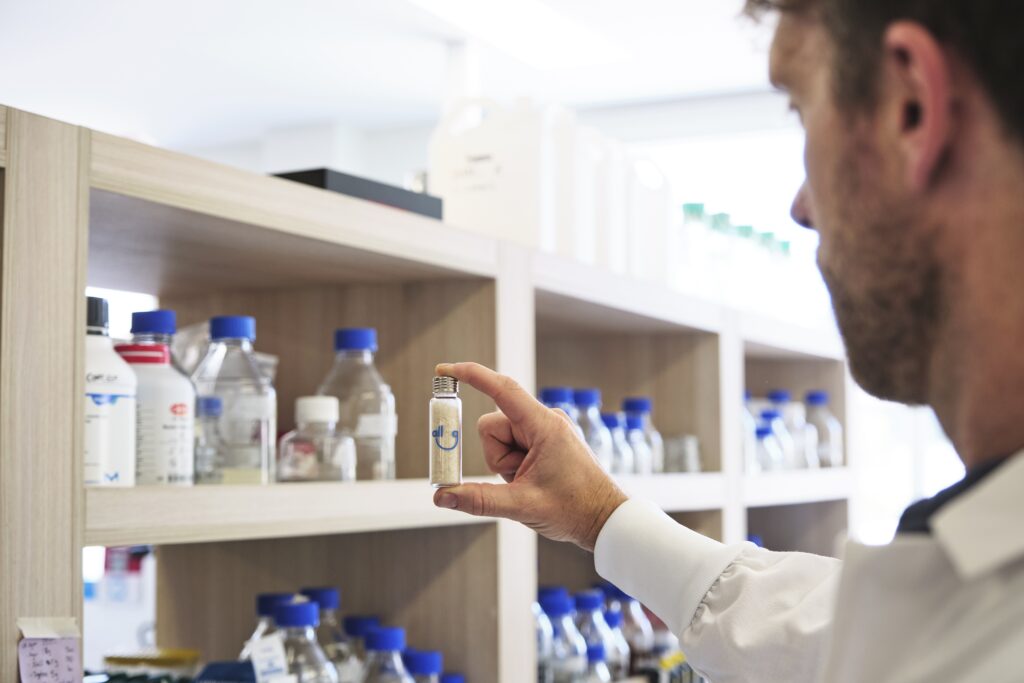
Australia could be a global hub for food biomanufacturing, which could bring economic and food security wins, but only if the government backs the industry through policymaking.
Home to a leading food safety framework, high-quality feedstock supply, and cross-disciplinary research capabilities, and established trade links with fast-growing Asian markets, Australia has a “once-in-a-generation” biomanufacturing opportunity.
Food technologies like precision fermentation, cell cultivation, and plant molecular farming can boost the country’s food security and economic resilience, generate employment, as well as decarbonise production.
However, despite these advantages, biomanufacturing remains under-invested compared to other bio-based sectors in Australia, and without urgent action from the government, it risks losing its early-mover advantage to global competitors.
That’s the consensus of a new white paper by Cellular Agriculture Australia (CAA), the Agrifood Innovation Institute, the Australian Strategic Policy Institute, and ANU National Security College, which calls for a coherent national approach to food tech, alongside significant and sustained investment in biomanufacturing.
The report sets out 25 recommendations across five priority domains to ensure Australia can fulfil its potential as a biomanufacturing leader.
1) National security

The organisations suggest that food security should be formally recognised by the federal government as a core national security priority. This would ensure that related policies and risk assessments would explicitly address vulnerabilities in Australia’s agricultural systems and food supply chains.
“It is misleading to present Australia as a food-secure nation without acknowledging the vulnerabilities embedded in our supply chains,” the report reads. “One key lever available to government to increase resilience is diversification of domestic production mechanisms through investing in novel and emerging biotechnologies for food production.”
Moreover, each node in the food security ecosystem should engage in a coordinated process to identify key drivers, risks, threats, and vulnerabilities. “Such an approach would provide the government with the comprehensive data needed to strengthen national resilience and safeguard critical food and technology supply chains,” the paper explains.
2) Policy alignment

The report argues that current policy settings are “fragmented, outdated, and fail to recognise the role of emerging food biotechnologies”. It says the federal agriculture department’s Feeding Australia plan should acknowledge that biotech will underpin the future of food, which will help diversify an otherwise highly concentrated food system vulnerable to climate and geopolitical shocks.
Feeding Australia should further recognise that food security is a cross-portfolio priority that would need to address national security, sovereign manufacturing capability and regional resilience.
The agriculture department should also team up with the industry and science department and the Treasury to establish a working group with industry members to set clear targets to diversify Australia’s food system and speed up the adoption of emerging food technologies. Future public funding should be linked to progress against these targets, and a formal government-industry body should be set up to oversee these goals.
Meanwhile, existing R&D policy frameworks should be tasked with supporting the emergence of new technologies, products or industries through explicit funding initiatives or simple changes to purpose and definitions.
And the industry and science ministry should promptly develop a bioeconomy strategy that explicitly includes biotech and biomanufacturing as core pillars, and recognises their role in agricultural and food security to build a future-proof food system.
Finally, CAA said it would establish an industry working group to develop policy solutions grounded in the sector’s needs and opportunities, and collaborate further with the Agrifood Innovation Institute and the Australian Strategic Policy Institute to drive government engagement and mitigate policy barriers.
3) Research and technical innovation

Further cross-disciplinary, open-access foundational research is crucial to closing the price gap of future-friendly foods with conventional products. Both the federal and state governments should expand support for such research, which requires ensuring its eligibility for and priority in public funding mechanisms.
The report recommends that at least 30% of the R&D funding allocated to the agrifood sector over the next funding cycle prioritise food biotechnologies and biomanufacturing.
The Australian government should also pump additional National Collaborative Research Infrastructure funding beyond the current 2024-28 period, which is essential to maintain continuity in foundational biotechnology research.
Additionally, the science and innovation ministry should review current allocations in Cooperative Research Centres to determine whether they can expand their mandates to include biotech, or whether a new centre is needed.
As for the industry itself, stakeholders should clearly identify and document the high-priority research areas and technical innovations needed to support scale-up.
4) Regulation

Australia’s regulatory system is robust and trusted, but under-resourced and reactive, the organisations write. The agriculture ministry should therefore add “regulatory and policy agility” as a key guiding principle in the formation of Feeding Australia.
The next Federal Budget should increase the funds allocated to Food Standards Australia New Zealand (FSANZ), so it can shorten approval timelines without compromising safety. Federal departments are also advised to review and update the Food Standards Code to ensure it keeps pace with emerging technologies.
Likewise, the FSANZ workplans should be amended to formally propose the use of biotech in food production, particularly precision fermentation, to ensure the Food Standards Code is fit-for-purpose.
According to the white paper, the FSANZ Act should be revised to include a comparable overseas regulator regime, which would allow the body to accept dossiers and assessment outcomes from trusted regulators in other countries and streamline local approvals.
The regulator must further develop clear guidance documents outlining what companies must include in their novel food dossiers before submission, as the current handbook does not provide sufficient details. Plus, a cross-agency working group between FSANZ, the Office of the Gene Technology Regulator, and the Therapeutic Goods Administration could help reduce overlap and inconsistency among regulators.
From an industry perspective, companies should leverage CAA’s Regulatory Industry Working Group to identify challenges and advocate for reform through public consultations and direct engagement with regulatory bodies.
5) Commercial infrastructure finance

While regulation, research and policy are important, the most immediate barrier facing the country’s food biomanufacturing industry is access to fit-for-purpose infrastructure. Shared pilot facilities are scarce and expensive, and there are no large-scale commercial plants, forcing companies to look offshore.
The report recommends that the Treasury carry out a sector assessment to identify investment priorities and barriers, and clarify which public financing instruments are viable. To support this effort, a sub-working group of Feeding Australia should assess the current funding landscape and recommend priority actions.
Further, the agriculture ministry should set up a dedicated agency for the Australian biomanufacturing sector, in the mould of the Australian Renewable Energy Agency.
And the industry, innovation and science minister should work with the finance minister to ensure the risk tolerance guidelines of the National Reconstruction Fund align with the “catalytic nature of funding” needed to support nascent industries like food tech.
Finally, sector representatives should carry out robust economic modelling to assess the commercial, employment and export potential of the biomanufacturing industry, which would support a unified vision that demonstrates biotech’s value case to public and private investors.
“If we act now, food biotechnologies and biomanufacturing can deliver resilience, prosperity, and a leadership position for Australia in the global bioeconomy,” the report states. “The building blocks are here, the question is whether we will move fast enough to seize them.”
The post Australia is Primed for Food Tech Success – If the Government Does These Things appeared first on Green Queen.
This post was originally published on Green Queen.